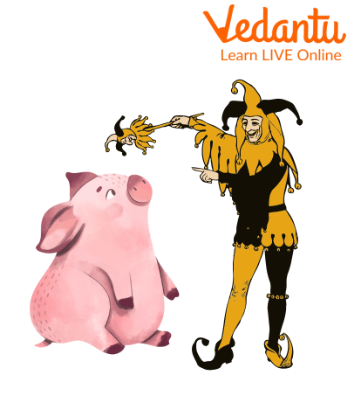What is “To Market, To Market”?
A folk nursery rhyme called "To Market, To Market" or "To Market, To Market, To Buy a Fat Pig" is based on the customary rural practice of visiting a market or fair where agricultural products would be bought and sold.
The children's song To Market To Market was first published in 1805. What a fascinating topic to write a poem or song about—visiting the market. Something that the majority of us regularly do. It has been a huge success with children's songs and is still strong today. You have probably heard a little child humming this song. If not, that may be because, like other nursery rhymes in America, this poem has lost appeal.
“To Market, to Market” Rhymes Lyrics
To market, to market to buy a fat pig;
Home again, home again, jiggety-jig.
To market, to market, to buy a fat hog;
Home again, home again, jiggety-jog.
To market, to market, to buy a plum cake;
Home again, home again, the market is late.
To market, to market, to buy a plum bun;
Home again, home again, the market is done.
To market, to market, a gallop a trot,
To buy some meat to put in the pot;
Three pence a quarter, a groat a side,
If it hadn’t been killed it must have died.

To Market to Market
To Market to Market Rhyme Meaning
The meaning of To Market to Market Rhyme is quite straightforward. The characters in this poem serve no particular purpose. Most likely, these are just regular individuals visiting the market to buy groceries. Because they frequent the shop, it's possible that they forgot certain products.
The author is becoming full from their market purchases. When it comes to purchasing their pot roast, they don't skimp and buy pig by the pound. After spending the entire day at the store, it shuts. Since there weren't as many businesses back then, most people visited the neighborhood market.
This poem is really one of several that makes mundane tasks enjoyable for children by describing them.
Do It Yourself
What are words that rhyme: pig, hog, bun?
The complete version of the song was first released in _____.
15th century.
1695.
1805.
None of these
Sample Questions
1. Who wrote the poem "To Market to Market"?
Ans: The rhyme is found in A World of Words, or Most Copious, and Exact Dictionary in Italian and English, authored by John Florio and first published in 1598.
2. Jiggity jig: What does it mean?
Ans: Jiggity is defined as motion that involves frequent jerks or jigs.
Conclusion
Read this poem to the kids at the grocery store with them simply to make them smile. The author's objective was to make shopping interesting for youngsters so they might tie their experience to anything. This poetry won't be forgotten any time soon!


FAQs on To Market, To Market Nursery Rhyme
1. How old is the poem "To Market To Market"?
An old nursery rhyme with English tradition origins, "To market, to market," dates back to the 15th century. The nursery rhyme was first published in its condensed form in the book "Songs for the Nursery" in 1805, despite the fact that its origins date back three decades.
2. What is the theme of the “To Market To Market” poem?
The traditional old song called "To Market, To Market" or "To Market, To Market, To Buy a Fat Pig" is focused on the usual rural activity of visiting a market or fair where food crops would be purchased and sold.
3. What key message does the poem "To Market, To Market" convey to students?
This rhyme is excellent for reviewing food terminology. Going around the classroom and "purchasing" everything from the grocery store after memorizing the original rhyme. Each student will learn to provide a grocery store item and give it a descriptive name.





